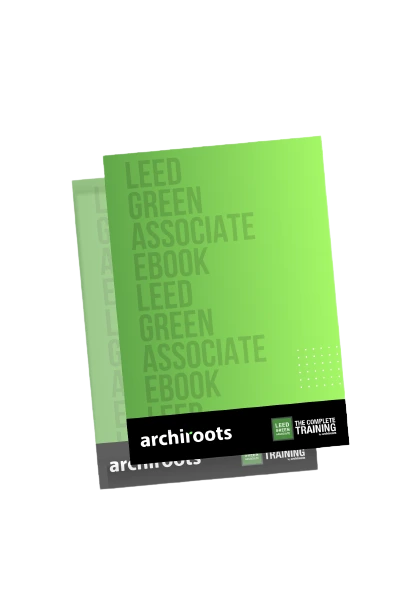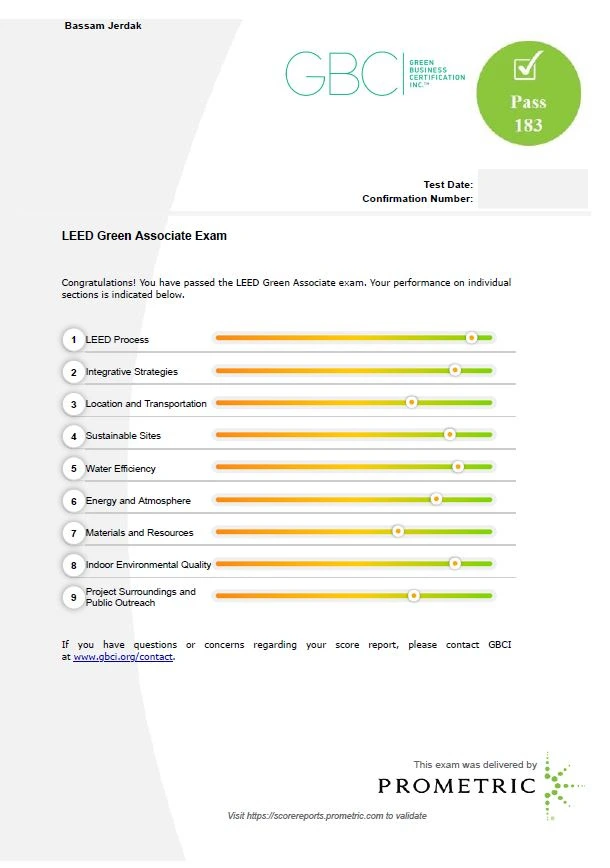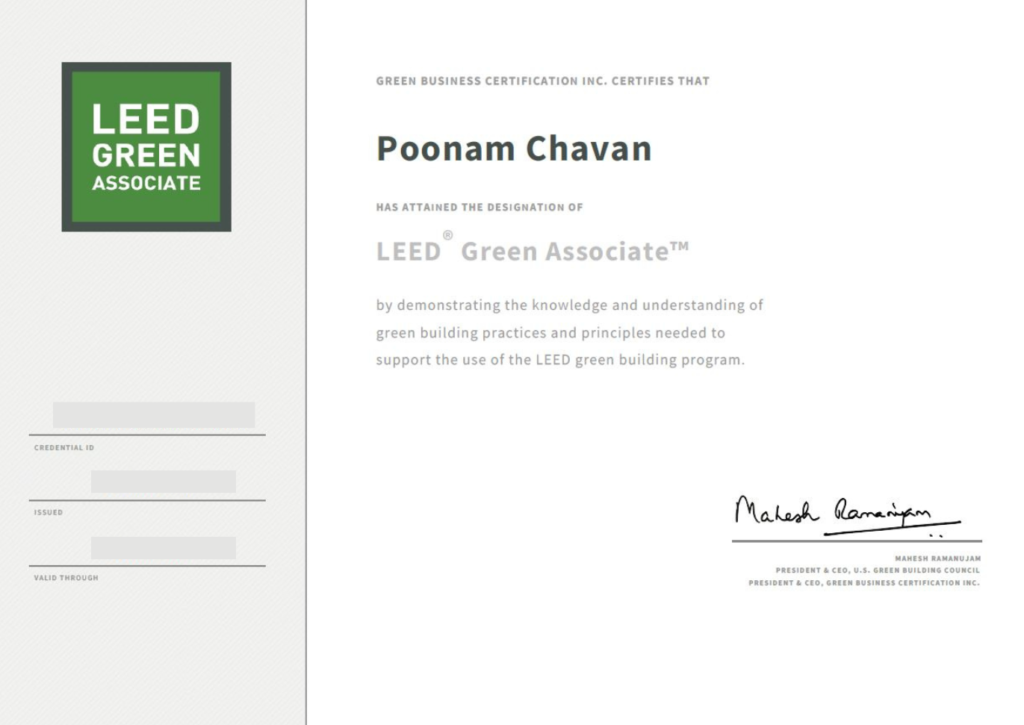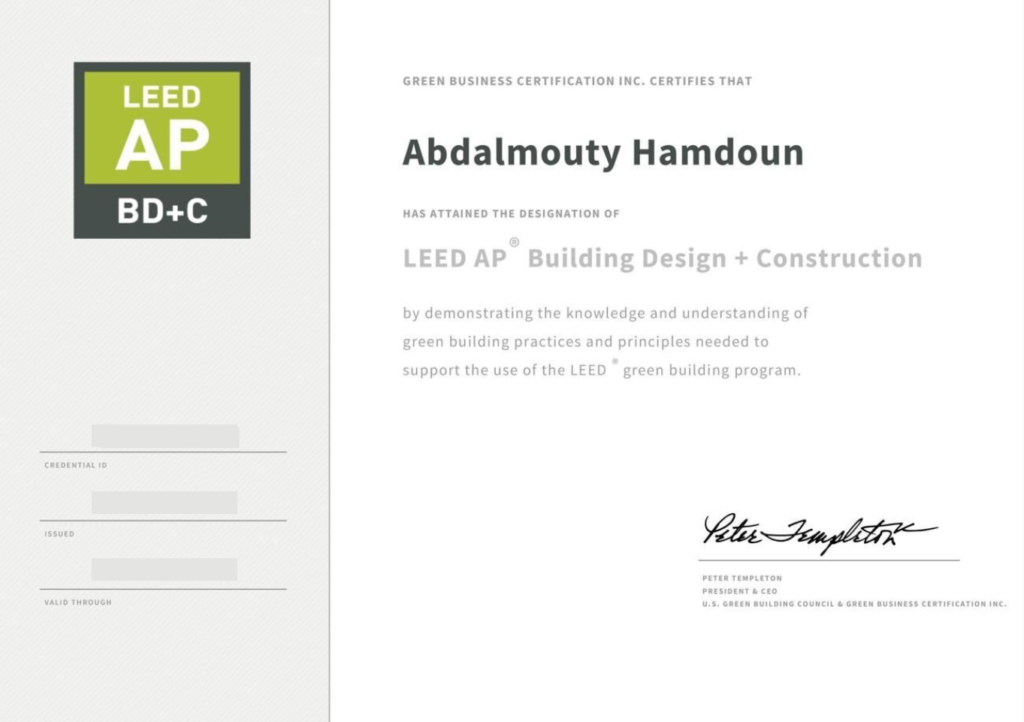LEED GA Exam Prep In 2 Weeks!
LEED GREEN ASSOCIATE EXAM PREP FOR PROFESSIONALS WITH NO TIME TO PREPARE

TRUSTED BY 5,000+ STUDENTS
TRUSTED BY 5,000+ STUDENTS

WHY THIS LEED EXAM PREP?
Become A LEED GA in 2 Weeks
TRUSTED BY 5,000+ STUDENTS
100% LEED GA exam pass rate
ON-DEMAND Instructor support


Free DOWNLOAD LEED GA Study Guide
This LEED Green Associate Study Guide is your must-have to preparing for the LEED exam.
Includes everything to get started and answers all your questions. Questions like what is LEED certification? How to get LEED certified? What does LEED stand for? Requirements and prerequisites.
The guide also includes free resources, articles and practice questions.
LEED GREEN ASSOCIATE PREP
4 STEPS TO BECOMING A LEED GREEN ASSOCIATE

If you are wondering how to pass the LEED Green Associate exam, then you are in the right place.
First, it’s a good idea to gather free LEED resources such as the LEED Green Associate candidate handbook and sign up to access the LEED GA study guide ebook.
1- LEARN THE LEED GA MATERIAL
A solid approach is to start with this LEED GA study plan. You can learn using LEED GA study guides, reference books, webinars, but the best way is a simplified LEED GA exam prep that saves time and makes sure you pass the non-refundable exam.
2- EXERCISE USING PRACTICE EXAMS
After learning the material, it’s essential to exercise using credible LEED practice exams that simulates the difficulty of the official exam. Even if you know the material, tricky questions can be the reason you fail. By passing several practice questions you ensure you are ready.
3- REVIEW USING FLASHCARDS
Based on your performance on the practice questions, focus on reviewing your weaker areas. Instead of retaking the full exam prep. It’s helpful to use flashcards, which present key terms in a question-and-answer format. Once you’ve reviewed the material and performed well on practice exams, you’re ready for the official exam.
LEED GA flashcards examples
Click the card to flip it 👇
4- SCHEDULE YOUR LEED EXAM
It is time for the LEED exam registration. First create a USGBC account, purchase the official LEED Green Associate exam, and you’ll receive a USGBC ID. With this ID, go to the Prometric website to schedule your exam at a test center or take it online from home.
meet your instructor

shadi abousamra
LEED TRAINER, SUSTAINABILITY CONSULTANT, UNIVERSITY PROFESSOR
Shadi AbouSamra is a Sustainability consultant, LEED GA, LEED AP and WELL AP trainer, and university professor. Specialized in sustainable design, LEED, and high-performance buildings.
He has trained over +5,000 professionals to pass the LEED Green Associate exam, LEED AP and WELL AP.
Students worldwide have been prepared by Shadi from USA, UAE, Canada, KSA and many more.
His LEED GA exam preparation guide has simplified the preparation for the LEED certification exam and saved professionals their valuable time and money. Helping scale their career and become more credible, using live and on-demand LEED exam prep that has achieved a 100% LEED green associate exam pass rate.
Even opening new opportunities that are tailored for LEED Green Associate jobs and higher salaries.
















+5,000 PROFESSIONALS HAVE SAVED BOTH TIME & MONEY






SUCCESS STORIES FROM THIS LEED GA EXAM PREP
- 35% SALARY HIKE
- Ashraf Shaaban
Project Manager
- 50% SALARY HIKE
- Omar Doughan
Operations Manager
- 47% SALARY HIKE
- Zeina Sawaya
Arch. Consultant
- FIRST JOB
- Linda K.
Junior Architect
- 20% SALARY HIKE
- Daria Taeb
Project Manager
- Ashraf Shaaban
Project Manager
- Omar Doughan
Operations Manager
- Zeina Sawaya
Arch. Consultant



















WHAT IS A LEED CERTIFICATION?
A LEED certification is a title given to buildings that has achieved at least 40 points. Buildings holding the LEED certification are Green buildings or sustainable buildings that reduce the negative impact on the environment.
Whereas a LEED Green Associate which is a foundational level is a professional equipped with skills to implement sustainability in both design and community. However, bear in mind that GA is an acronym that is no longer accepted by USGBC. A professional who has earned the credential will be titled LEED Green Associate and not LEED GA certification.
WHAT IS A LEED GREEN ASSOCIATE?
A LEED Green Associate is a well recognized accreditation developed by USGBC for professionals to implement green building practices and support the team working on LEED projects. So what is the true LEED GA meaning? It is credential a professional gains who designs and executes with sustainable practices. One of the best ways to demonstrate familiarity with green construction in non-technical areas . It showcases that the holder has proven level of knowledge in sustainable design, LEED certification process, and operations.
WHAT DOES LEED STAND FOR?
LEED stands for leadership in energy and environmental design, it is one of the most well known green building certification standards developed by USGBC and managed by GBCI. Buidings can earn the LEED certification and professional can become LEED accredited.

LEED Green Associate Exam
The LEED GA exam is made up of 100 multiple questions, no essays or fill in the blanks. But there are questions where you need to choose 2 or 3 correct answers.
The LEED GA certification exam is 2 hours long and the passing score is 170/200. No deductions for incorrect answers.
The 100 questions consists of 9 subjects as follows:
- LEED Process, 16 questions
- Integrative Strategies, 8 questions
- Location and transportation, 7 questions
- Sustainable sites, 7 questions
- Water efficiency, 9 questions
- Energy and atmosphere, 10 questions
- Material and resources, 9 questions
- Indoor environmental quality, 8 questions
- Project surroundings and public outreach, 11 questions

LEED Green Associate Exam Cost
The LEED Green Associate exam cost 250$ for non-USGBC members and 200$ for USGBC members. If you are a university student, meaning you are currently enrolled in a Bachelor’s, Master’s, PhD or any program for the matter, the LEED certification exam cost will be reduced to 100$.
Whereas the LEED AP speciality is 350$ if you are already a LEED Green Associate, it has to be valid and a non expired LEED GA certification. Students also get a discount for the exam, 100$ discount which brings the price down to 250$ for the LEED AP speciality.
This brings the total LEED exam cost to 600$ if you need to become a LEED GA and then upgrade to the LEED AP. Whereas you can take a combined 4 hour exam in one sitting rather than 2 separate 2 hour exams for 550$ and become a LEED AP directly.
It is good to note the above fees are the official LEED exam fees and does not include any books, the LEED certification online program, practice exams or similar LEED study material. On average a LEED Green Associate prep costs anywhere between 400$-800$ and books around 200$. Not to mention the limitation of having to show up on a specific time and day for 3 months, which can be an issue to most professionals with long and unstable working hours.
This archiroots simplified LEED green associate exam prep is both on-demand and allows users to prepare at their own pace. Values professional’s time, which takes 2 weeks or less for only 30 minutes a day and is the least expensive with a money-back guarantee. So has no risk of failing a non-refundable exam, signup below to learn more!
Can Anyone Be LEED Certified?
- Yes, anyone can become LEED certified. No matter if you are an Architect, Engineer, Facility Manager, Developer, Interior Designer, Landscape Architect, Lighting Designer, Owner or not even in the building industry sector.
- There is no LEED Green Associate requirement, no experience, preparation hours, specific discipline or anything like that is required. The only requirement is to be above 18 years old to be eligible to take on the exam.
- Whereas the LEED AP specialty test requires a LEED Green Associate credential holder. Meaning the candidate should have passed the GA exam, making sure it is not expired. No other requirement is needed, not even work experience. But how to become LEED certified? There are 4 steps, first to learn the material, second to exercise on practice exams. Thirdly, to review through flashcards before registering for the official exam and passing it.

Is LEED Green Associate Worth It?
Yes, the LEED Green Associate certification is worth it. Especially considering most building industry related job opportunities and client demands revolve around candidates that hold the LEED Green Associate and LEED AP credential. If you are looking to increase credibility, authority, land senior roles, get more clients and increase your knowledge on green buildings and LEED building features then this certification is worth looking into.
IS THE LEED EXAM HARD?
Yes and no, depending on your preparation, experience and which LEED certification exam. The LEED Green Associate exam is not as difficult as the LEED AP test since it does not include calculations, formulas and table memorization. Also depending on which preparation, study material and practice exams you take can, will have a major difference in perceiving the difficulty of the official exam.
Following this simplified LEED Green Associate course can be quite easy and fast. Making the learning process smooth for any professional even without any LEED experience or green building knowledge.
HOW LONG DOES IT TAKE TO BECOME A LEED GREEN ASSOCIATE?
On average 3 months, but with this simplified LEED exam prep you can expect to become LEED certified in 2 weeks. It really depends on the study material you take and the effort you put down to prepare. You just need 30 minutes a day to learn all material in 1 week and you need to take 1 practice exam a day for 1 week to make sure you pass the official exam, taking you a total of 2 weeks.
IS THE LEED EXAM OPEN BOOK?
No, the LEED Green Associate exam is not open book and you cannot take a cheat sheet or anything with you to the exam. Everything you need will be accessible in the examination room. Even a calculator is not allowed since it is included in the computer. No keys, no watches or any accessory will be allowed, all will be taken to the locker room. No supporting material will be given, not even an embedded PDF, you will have to depend on what you studied.


